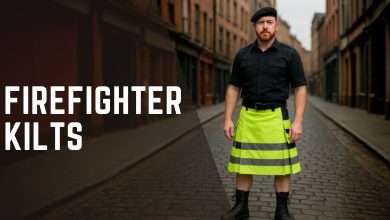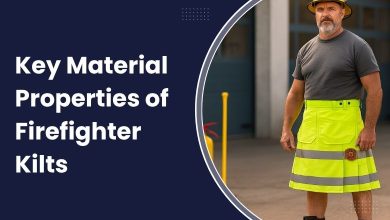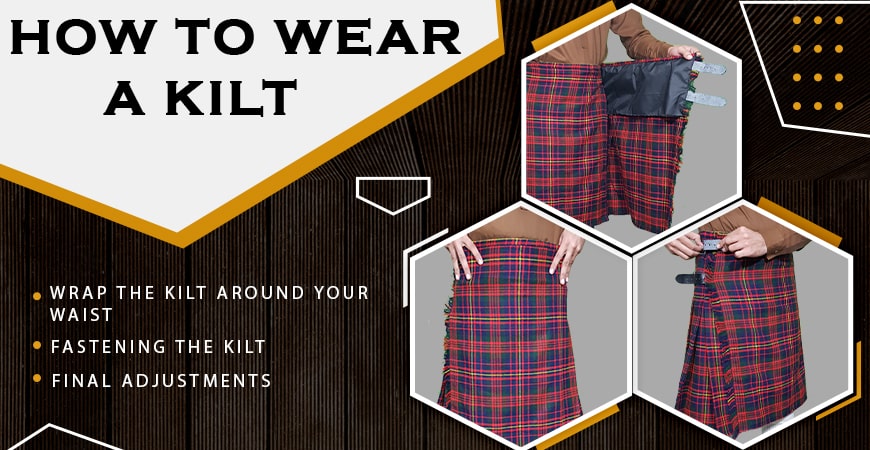Kilt Belt Sizing Guide: How to Measure for the Perfect Fit

If you are not familiar with the traditional kilt appearance, figuring out how to wear a kilt belt and take accurate measurements can be confusing. Similarly, you may have many other queries. What distinguishes these belts from ordinary ones? What equipment do you require to obtain an accurate belt measurement, and what are the best practices? You might also worry about making mistakes when measuring for the belt.
Remember that any kilt combination is incomplete without the traditional Scottish kilt accessories, which give more traditional flair and authenticity in attire. Thus, it is crucial to dress them appropriately. This article seeks to address all of your inquiries. Let’s get our conversation started!
Table of Contents
ToggleWhat Makes a Kilt Belt Unique?
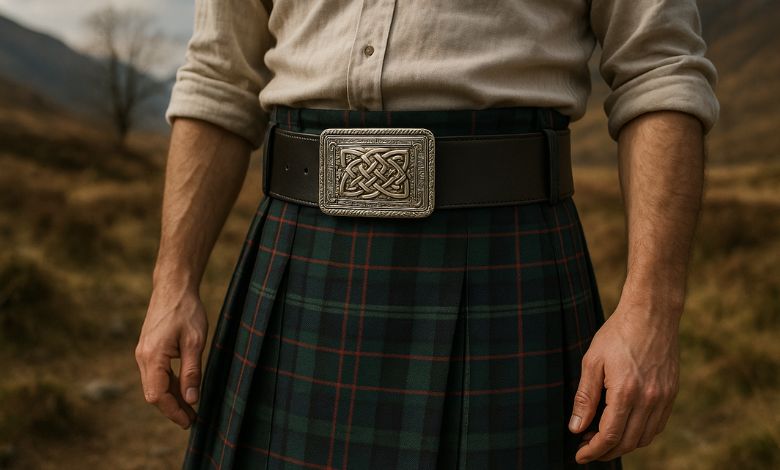
Many people consider kilt belts and standard pant belts to be the same and it is a misconception. This confusion motivates us to clarify what makes kilt belts unique. The distinction of the Scottish belt involves several factors including length, composition, and style of wearing it with a kilt. Their composition takes place with durable materials such as leather. The next thing is their width, which is 2.25 to 3 inches wider than regular pant belts.
Kilt buckles are often engraved with Celtic patterns, clan crests, or other significant motifs, which are essential components and reflect cultural heritage. As a matter of fact, they are a focal point of the kilt ensemble and serve as striking statements. The way to wear Scottish belts is a bit different. They are worn via belt loops, in contrast to regular belts, and are worn around the waist and on top of the kilt.
Tools You’ll Need For Belt’s Measurement!
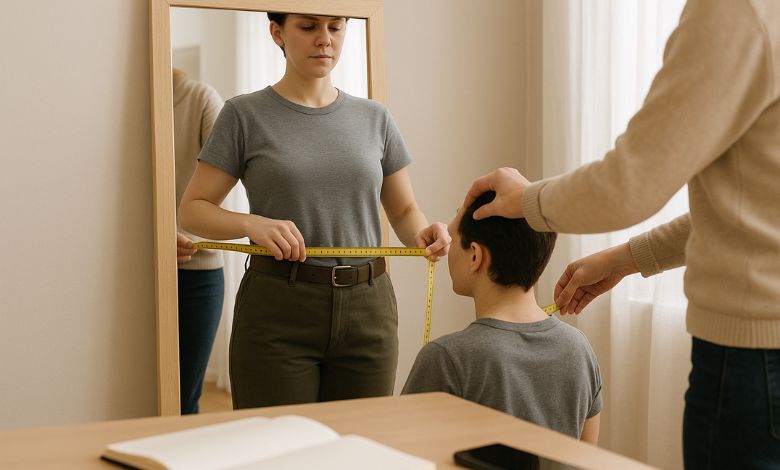
Getting an exact measurement of your belt ensures your comfort and secure fit for a longer duration. Fortunately, the tools needed to measure for a kilt belt are simple and easy to find.
Measuring Tape: It is the most essential tool because it measures the waist circumference where the kilt belt will sit. A flexible, cloth tape ensures accuracy around curves and contours.
Full-Length or Wall-Mounted Mirror: If you are alone, do not ignore the importance of a mirror because it helps you check the measuring tape level and straight across the back. It also helps you prevent uneven or incorrect measurements.
Notebook or Digital Note App: Remembering all the measurements might not be easier. So, seek assistance from a notebook or your smartphone to record your measurements and any additional notes for ordering or custom sizing.
Second Person (Optional but Recommended): A helper can hold the tape in place and ensure its level across your back, greatly improving measurement accuracy, especially for those with limited mobility.
How to Measure for a Kilt Belt
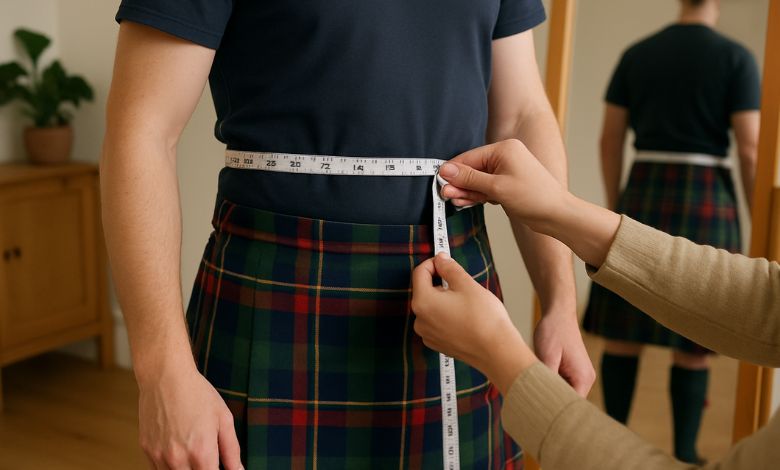
Now that you have gathered the tools to calculate your kilt belt, it’s time to move ahead and get measurements practically. The process is not challenging at all.
Wear Your Kilt or Stand in Kilt-Wearing Position
Before you even get the measuring tape, make sure your kilt is on. This ensures your measurement reflects how the belt will actually be worn. For comfort and accuracy, this is essential!
Find Your Natural Waist
Instead of where your pants sit, your natural waist is a few inches higher for kilts. It is often just above your belly button and below your ribs. This is the customary location for the belt to sit and for wearing a kilt. While standing upright, use your fingers to locate the narrowest part of your torso.
Measure Your Waist
Wrap the flexible measuring tape around your natural waist. Not too tight, but secure enough. It should not drop or stay up high on the backside but remain level throughout. If someone is not around, check yourself in the mirror or call any companion to seek assistance for more accuracy.
Double-Check Fit with a Belt You Already Own
If you already have a well-fitting kilt belt, lay it flat on a table and take its dimensions from the buckle to the hole you use most frequently. This trick serves as a backup measurement that ensures the accuracy of waist measurement.
Sizing Ranges
| Kilt Belt Size | Length in Inches | Length in Centimeters |
| Small | 29″ – 34″ | 74 – 86 cm |
| Medium | 34″ – 39″ | 86 – 99 cm |
| Large | 39″ – 44″ | 99 – 112 cm |
| X-Large | 44″ – 49″ | 112 – 125 cm |
| XX-Large | 49″ – 54″ | 125 – 137 cm |
How a Properly Fitted Kilt Belt Enhances the Overall Outfit
This query is often asked by people and we find it a must-to-answer here. The proper fitting of a kilt belt enhances overall fit in two ways: functional and aesthetical enhancement. First of all, it secures the fit of a kilt and offers a proper space to attach sporrans. Second, it helps to adopt the shape of the traditional Scottish Highland dress.
Moreover, the wider belts with chromed buckles have traditional designs exposing a connection with specific cultures. Similarly, they both coordinate with other kilt accessories such as sporrans, flashes, kilt socks, and brogues to ensure a polished appearance.
Common Mistakes to Avoid While Measuring For Belt!
People unfamiliar with the tips mentioned above to measure their kilt belt sizing usually make several mistakes. Therefore, knowing some points can save their time and investment.
- People usually take their measurements according to the pant’s waist. Therefore, the solution is simple to measure from the naval.
- While measuring, people ignore the thickness of the kilt’s fabric and other accessories (if worn below).
- Measuring too tight or loose results in discomfort. You should make sure that the measuring tape is snug but not digging into your skin.
- People are seen getting measurements alone which increases the probability of mistakes. Therefore, the solution is to ask anybody to be your companion.
Buy Your Next Kilt Belt at The Utility Kilt!
Now you know how to measure the size of your kilt belt precisely. You are also aware of the sizing guide and mistakes to avoid. It’s time to buy a belt. You might be wondering where to find a reliable store.” But don’t worry, we are here to get a perfect solution for this situation in the shape of “The Utility Kilt.” At our online store, we have premium-quality belts, buckles, kilts, and all other accessories you need to complete your attire.
FAQs About Kilt Belt Sizing
Can I use a regular belt with a kilt?
There is no prohibition in doing so, but it is not a traditional practice. Regular belts may leave your kilt outfit unfinished and may not provide the expected comfort because of their size.
Do kilt belts come in standard sizes or custom fits?
Kilt belts are available in both forms today. Some reliable stores like The Utility Kilt have different sizes of belts available in inventory. If none of these sizes fit, we can personalize the one for you.
What material is best for a kilt belt?
Leather is the traditional and ideal material to make kilt belts. In leather, experts usually prefer high-grain leather or cowhide leather for endurances and easy molding without causing cracks.
When should I consider changing my kilt belt?
If you notice your buckle getting faded, it’s an indication to change the belt. Similarly, leather getting cracked or too dry also stipulates that it’s time to buy a new one.
